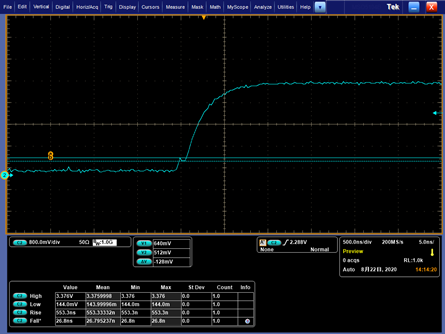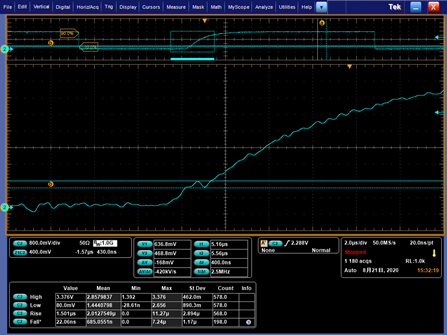Other Parts Discussed in Thread: TCA9802
Hi team,
My customer is using the TCA9617B now. We want to check how to improve or eliminate the phenomenon. We have tried to increase the pull up resistor value, but seems not to improve too much. Do you have more suggestions? Thanks.
1.2K pull up resistor
2.2K pull up resistor
4.7K pull up resistor






